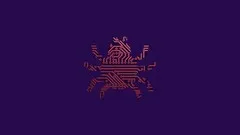
Secure Coding in Python Django 
Learn how to develop secure web applications using Python Django with the course on Secure Coding in Python Django. This course focuses on web application vulnerabilities and attacks, teaching you how to hack and secure websites using Python Django. You will learn the basics of Python Django and web vulnerabilities based on OWASP Top 10. With hands-on lab demonstrations and discussions, you will gain practical experience in securing web applications. Whether you are a beginner or an experienced Python developer, this course will equip you with the knowledge and skills to protect your applications from potential attacks. Join now and dive deep into the world of secure coding! ▼
ADVERTISEMENT
Course Feature
![]() Cost:
Cost:
Paid
![]() Provider:
Provider:
Udemy
![]() Certificate:
Certificate:
Paid Certification
![]() Language:
Language:
English
![]() Start Date:
Start Date:
2023-04-01
Course Overview
❗The content presented here is sourced directly from Udemy platform. For comprehensive course details, including enrollment information, simply click on the 'Go to class' link on our website.
Updated in [September 27th, 2023]
What does this course tell?
(Please note that the following overview content is from the original platform)Welcome to the course on Secure Coding in Python Django!In this course will be focusing on Web Application Vulnerabilities and Attacks&Hacking and securing in Python Django Framework The approach of this course is to learn Web TechnologiesLearn the basics of Python Django and web vulnerabilities based on OWASPTop 10! The course consist of whiteboarding discussions and lots of hands-on lab demonstrations The lab includes Kali Linux which is attackers and target websites that we will hack Python Django is a popular web framework used for developing web applications With its user-friendly syntax and efficient architecture it has become a preferred choice for many developers However as the number of web-based attacks and data breaches increases it has become increasingly important to develop applications with security in mindThis course is designed to help you develop secure coding practices while working with Python Django Throughout this course you will learn about the most common security vulnerabilities that web applications face and how to protect against them You will also learn about various security features in Django and how to use them effectivelyWhether you are a beginner or an experienced Python developer this course will provide you with the knowledge and skills to develop secure web applications using Python Django So get ready to dive deep into the world of secure coding and protect your applications from potential attacksTarget AudiencePython Programmers (Aspiring)Web App Django SpecialistWeb App Penetration TestersCyber Security PractitionerExpectationsWill cover basic PythonWill cover basic HTTPWill cover basic DjangoWill cover basic web attacksYou won't become a professional HackerNeed to learn many thingsSoftware TechnologiesUbuntu Server (Django)Kali Linux Client&AttackerDockerPython 3XMain Web Applications : Coffee Shop (Django)Testing Web Applications : PHP Hack-it Auction (LAMP)SectionsIntroductionSecure Coding in Python LabPython BasicsWeb Application BasicsDjango BasicsWeb App Vulnerabilities and AttacksSecuring Web App using DjangoCompletion
We considered the value of this course from many aspects, and finally summarized it for you from two aspects: skills and knowledge, and the people who benefit from it:
(Please note that our content is optimized through artificial intelligence tools and carefully reviewed by our editorial staff.)
What skills and knowledge will you acquire during this course?
During this course on Secure Coding in Python Django, the learner will acquire the following skills and knowledge:
1. Understanding of web application vulnerabilities: The course will cover the most common security vulnerabilities that web applications face, such as SQL injection, cross-site scripting (XSS), cross-site request forgery (CSRF), etc. The learner will gain knowledge about these vulnerabilities and how they can be exploited.
2. Knowledge of secure coding practices: The course will focus on teaching secure coding practices while working with Python Django. The learner will understand how to develop applications with security in mind and protect against potential attacks.
3. Familiarity with Python Django framework: The learner will gain a solid understanding of the Python Django framework, including its user-friendly syntax and efficient architecture. They will learn how to use Django effectively to develop secure web applications.
4. Hands-on experience with lab demonstrations: The course includes hands-on lab demonstrations, where the learner will get practical experience in identifying and exploiting vulnerabilities in web applications. They will also learn how to secure these applications using Django.
5. Knowledge of OWASP Top 10: The course will cover the OWASP Top 10, which is a list of the most critical web application security risks. The learner will understand each of these risks and how to mitigate them using secure coding practices.
6. Understanding of web application testing: The learner will gain knowledge about testing web applications for vulnerabilities. They will learn how to use tools like Kali Linux and Docker for testing and simulating attacks on target websites.
7. Familiarity with software technologies: The course will introduce the learner to various software technologies used in web application development, such as Ubuntu Server, Kali Linux, Docker, and Python 3.x. They will gain hands-on experience with these technologies.
8. Ability to secure web applications using Django: The learner will learn about various security features in Django and how to use them effectively to secure web applications. They will understand concepts like authentication, authorization, input validation, and secure session management.
Who will benefit from this course?
The course on Secure Coding in Python Django will benefit the following individuals:
1. Python Programmers (Aspiring): This course will provide aspiring Python programmers with the knowledge and skills to develop secure web applications using Python Django. They will learn about web vulnerabilities and attacks, as well as how to secure their applications.
2. Web App Django Specialists: Individuals who specialize in developing web applications using the Django framework will benefit from this course. They will learn about common security vulnerabilities and how to protect against them, enhancing their skills in developing secure web applications.
3. Web App Penetration Testers: Penetration testers who focus on testing the security of web applications will find this course valuable. They will learn about various web vulnerabilities and attacks, enabling them to identify and exploit these vulnerabilities in order to improve the security of web applications.
4. Cyber Security Practitioners: Professionals working in the field of cybersecurity will benefit from this course as it provides a comprehensive understanding of web vulnerabilities and attacks. They will learn how to secure web applications using Django and develop secure coding practices.
Course Syllabus
Introduction
Secure Coding in Python Lab
Python Basics
Web Application Basics
Django Basics
Web App Vulnerabilities and Attacks
Securing Web App using Django
Completion
Course Provider

Provider Udemy's Stats at AZClass
Discussion and Reviews
0.0 (Based on 0 reviews)
Explore Similar Online Courses

The American Revolution

Introduction to Google Calendar for beginners

Python for Informatics: Exploring Information

Social Network Analysis

Introduction to Systematic Review and Meta-Analysis

The Analytics Edge

DCO042 - Python For Informatics

Causal Diagrams: Draw Your Assumptions Before Your Conclusions

Whole genome sequencing of bacterial genomes - tools and applications

Clojure Basics

Certified Secure Web Application Engineer (CSWAE)


Start your review of Secure Coding in Python Django